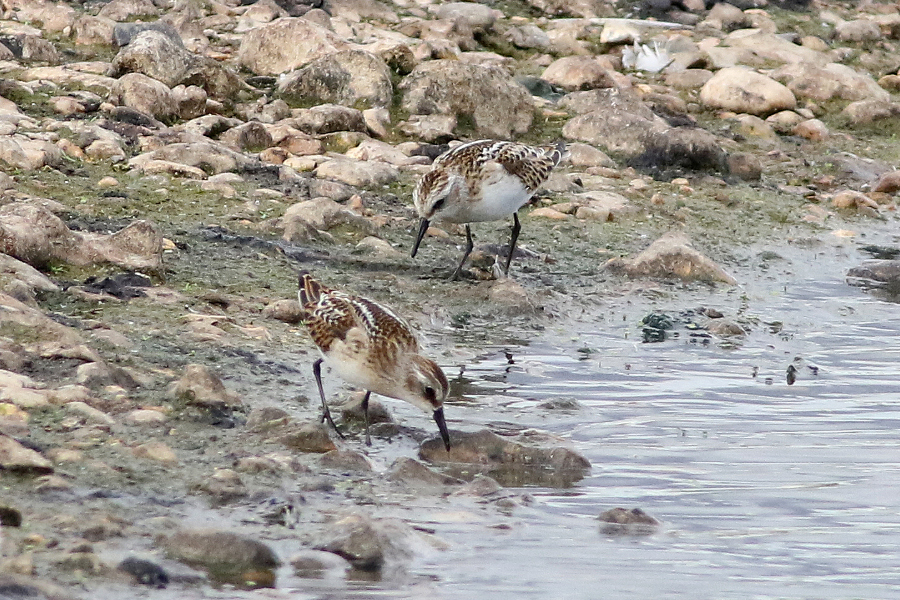Recent activities

Little Stint at Rye Meads… Hail the Lemming!
By Stint expert and the Group’s chief Head Banger, Alan Harris
Lemmings. They throw themselves off cliffs. In massive numbers. Stark staring mad or what?
After a hard day’s ringing at the Meads I often sympathise.
That’s pretty much all I’ve ever heard about Lemmings – not to be confused with the enigmatic and sadly dead (off a cliff?) Lemmy, frontman of Motorhead, and, as far as I know, never recorded (but occasionally played by mistake at the swallow roost) at Rye Meads.
Two Little Stints arrived at Rye Meads on 27th August 2016 – I don’t know who found them… but thanks!
Thanks because they are a truly rare bird at Rye Meads. When observations first began at Rye Meads, the Rye Meads Ringing Group found Little Stints on the newly constructed lagoons which were part -empty and ideal for waders. In 1957 two were present on 1st September, one on 3rd September, 2 on 18th September and an amazing 12 between 24th and 30th September. Crikey, Finland station musht have been kneesh deep in Lemmingsh. Then in 1964 one was present on 30th and 31st August, with another on 23rd September to 1st October 1967. In 1970 one was present from 23rd August until 26th August. In 1977 one visited the dredged old sludge beds on 25th August. Then a single was seen between 25th August and 31st August 1980, and another occurred on 2nd October 1983. One arrived on 20th September 1984 and remained until the 21st. Here we go, there is a (very) rough pattern of records on a three or four year rotation. After that, no matter what the Lemmings were up to, we didn’t really have good enough wader habitat to invite a migrating stint down. Reprofiling and seasonal draining of No 1 lagoon produced the latest record – a juvenile from 17th-19th September 2008.
Until now.
What exactly is the Lemmy connection? Lemmings are rodents living in the arctic tundra, and their population fluctuates dramatically. Fast breeders in good times, they increase rapidly and eventually eat themselves out of house and home…. a vast hungry population causes mass movements to find food – hence the stories of Lemmings throwing themselves off cliffs – they just get to the edge in their search for food and have nowhere to go. Killed to death (1988). Stone dead forever (1979). Eventually a lack of food causes the population to collapse – and this seems to work in roughly a four year cycle. Born to raise hell (1993); but it doesn’t last.
And what does this have to do with arctic waders? When Lemming populations are high the arctic predators – Arctic Foxes, Stoats, Snowy Owls, gulls and skuas – have an easy time, they hunt the Lemmings and feed their young on the tasty rodents. When Lemmings are scarce they have to refine their skills to catch wader chicks instead. And in years of poor Lemming numbers, waders are hit very hard. In those years most birders in the UK struggle to tick Little Stint or Curlew Sandpiper off their annual list, there’s not many to go round. This year early autumn news of an influx of these beautiful birds suggests Lemmings are on a high, so… Dancing on your Grave (1993), Lemmings!
Hail the Lemming!

[…] were two Little Stints which showed well in front of the Draper Hide over the Bank Holiday weekend. See our post for an amusing explanation of why these birds occur at RM every three to four […]